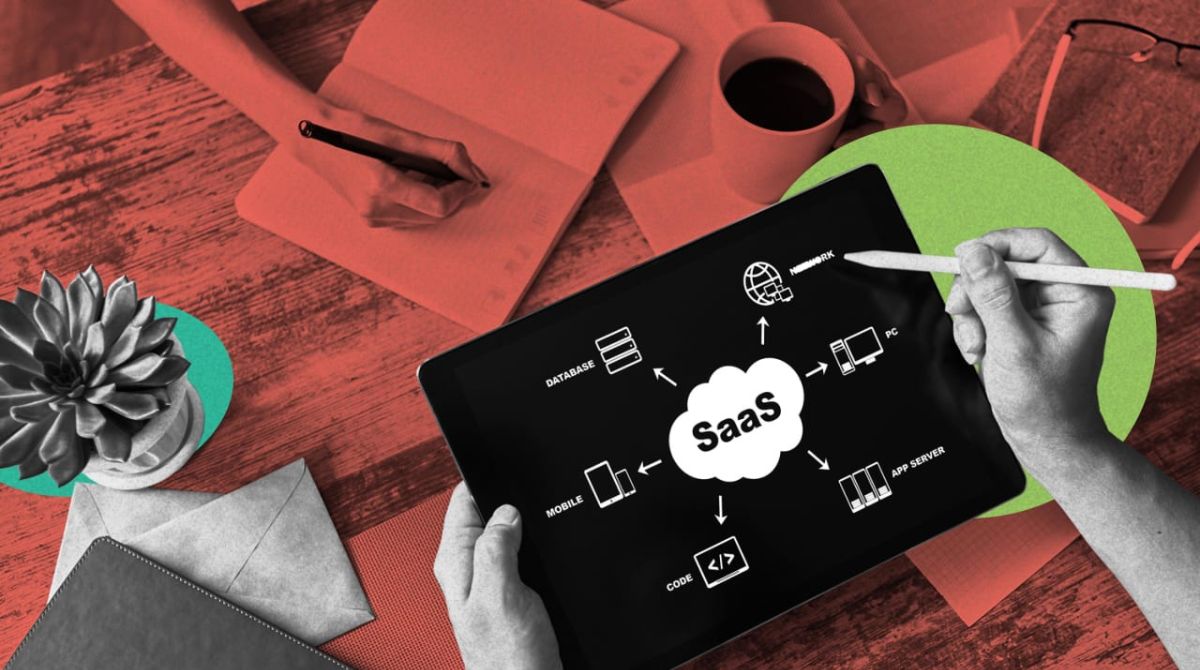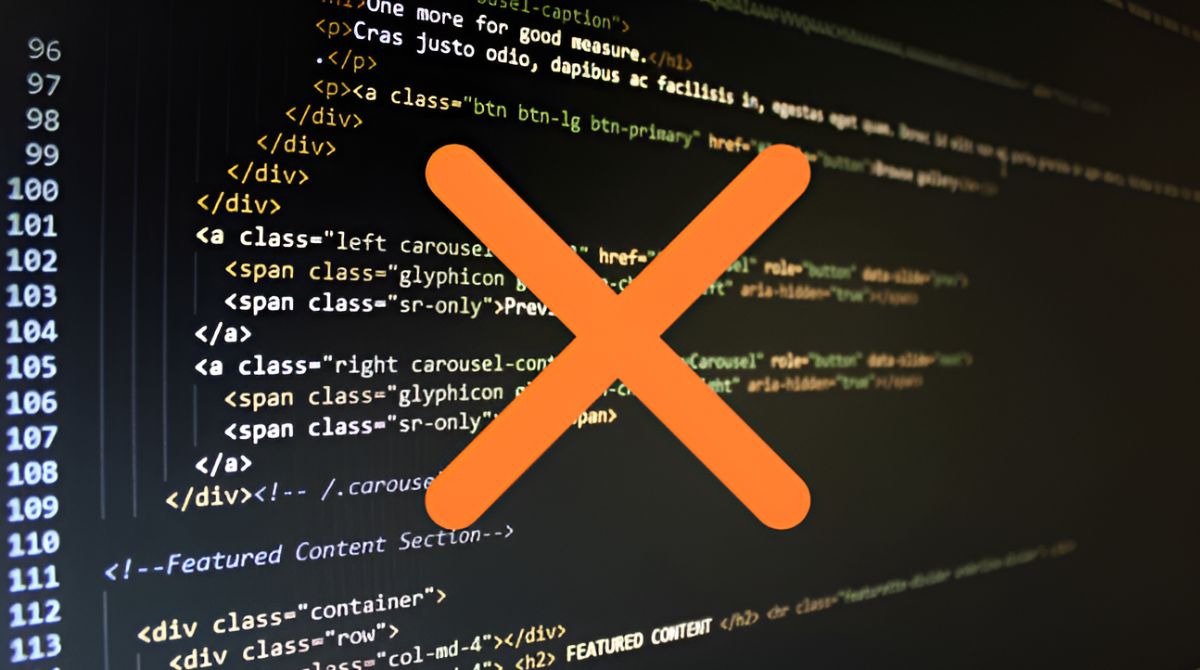Introduction
Welcome to the exciting world of Software as a Service (SaaS) products! If you have a groundbreaking idea and are looking to launch it as a SaaS product, you’re in the right place. SaaS products have gained immense popularity in recent years due to their scalability, flexibility, and cost-effectiveness. Whether you’re a startup or an established company, launching a SaaS product can be a game-changer for your business.
In this article, we will guide you through the process of launching a SaaS product, from understanding your target audience to refining your product based on user feedback. By following these steps, you can increase your chances of success and build a product that users love.
Before diving into the details, let’s first understand what exactly a SaaS product is. In simple terms, it is a software application that is hosted and provided on-demand over the internet. Unlike traditional software, SaaS products can be accessed from any device with an internet connection, making them highly accessible and user-friendly.
The key advantage of a SaaS product is that it is subscription-based, offering customers a pay-as-you-go model. This eliminates the need for large upfront investments and allows businesses to scale their software usage based on their needs.
Now that we have a basic understanding of SaaS products, let’s proceed with the steps to successfully launch your own.
Understand Your Target Audience
One of the first and most crucial steps in launching a SaaS product is to understand your target audience. Your target audience consists of the individuals or businesses who will benefit from and have a need for your product. By thoroughly understanding your target audience, you can tailor your product to meet their specific needs, increase customer satisfaction, and drive success.
To understand your target audience, start by conducting market research. Identify the pain points and challenges that your product aims to solve. Determine who would be most affected by these pain points and who would benefit the most from your solution.
Collect demographic information such as age, gender, location, and occupation, as well as psychographic information like interests, preferences, and values. This will help you create detailed buyer personas that represent your ideal customers.
Additionally, use surveys, interviews, and feedback from potential customers to gain insights into their motivations, expectations, and behaviors. This qualitative data will provide you with a deep understanding of their pain points and preferences. Analyze the competition and identify gaps in the market that you can fill with your product.
Once you have a clear understanding of your target audience, you can align your product features, messaging, and marketing strategies to resonate with them. Remember to keep your target audience at the forefront of your decision-making process throughout the product development and launch phases.
For example, if your target audience consists of tech-savvy millennials, you may want to focus on creating a sleek and intuitive user interface with advanced features. On the other hand, if your target audience is small businesses, you may prioritize affordability and ease of use.
Understanding your target audience is an ongoing process. Continuously gather feedback, analyze usage data, and adapt your product to meet their changing needs. By doing so, you will build a loyal customer base and increase the success of your SaaS product.
Research the Market
Market research is a crucial step in launching a SaaS product. It involves gathering data and insights about your target market, competition, and industry trends. By conducting comprehensive market research, you can make informed decisions and position your product for success.
Start by analyzing the overall size and growth potential of your target market. Is there a demand for your product? Are there enough customers willing to pay for it? Understanding the market size will help you estimate your potential customer base and revenue projections.
Next, identify your direct and indirect competitors. Analyze their offerings, pricing models, features, and customer reviews. This will provide valuable insights into what works and what doesn’t in the market. Differentiate your product by identifying unique selling points and areas where you can outperform the competition.
Furthermore, stay up-to-date with industry trends, innovations, and emerging technologies. This will help you anticipate changes in the market and adapt your product accordingly. Study successful SaaS companies to learn from their strategies and approaches.
In addition to competitor research, gather customer feedback and insights. Conduct surveys, interviews, or focus groups to understand their needs, preferences, and pain points. This information will be invaluable for tailoring your product to meet their expectations and distinguishing yourself from competitors.
A crucial aspect of market research is understanding the pricing landscape. Analyze the pricing models of similar SaaS products in the market. Consider factors such as feature differentiation, value proposition, and target audience affordability. Set a competitive and sustainable pricing strategy to attract customers while maximizing profitability.
By researching the market thoroughly, you will gain a deep understanding of your target customers, competitors, and industry dynamics. This knowledge will guide your product development, positioning, and marketing strategies, setting the foundation for a successful SaaS product launch.
Determine Your Unique Selling Proposition
In a crowded marketplace, having a unique selling proposition (USP) is essential to differentiate your SaaS product from the competition. Your USP is the distinctive feature or benefit that sets your product apart and makes it irresistible to your target audience.
To determine your USP, start by analyzing the strengths and weaknesses of your product. Identify what makes it unique and valuable compared to other solutions available in the market. This could be a specific feature, a novel approach to solving a problem, or a combination of factors that provide a superior user experience.
Consider the pain points of your target audience and how your product addresses them better than anyone else. Highlight the benefits and outcomes that your product delivers, such as time savings, cost reduction, increased efficiency, or improved performance.
Focus on the value proposition that your product offers. How does it solve a problem differently or more effectively? How does it provide a better return on investment for your customers?
Furthermore, consider the emotional appeal of your product. How does it make your customers feel? Does it provide a sense of security, convenience, or empowerment? Emphasize the emotional benefits that resonate with your target audience and stir their desire for your product.
Once you have identified your USP, incorporate it into your marketing messaging, branding, and communication. Clearly communicate the unique benefits and advantages of your product to your potential customers. Use your USP as a key differentiator in your website copy, social media posts, and promotional materials.
Remember, your USP is not set in stone. As you receive feedback from customers and gather more data, you may need to refine and adjust your USP to better align with your target audience’s needs and preferences. Continually analyze your competitors and market trends to ensure that your USP remains relevant and compelling.
By identifying and capitalizing on your unique selling proposition, you will create a strong competitive advantage and attract customers who resonate with the value your product brings. This will contribute to the success of your SaaS product launch.
Develop Your Product
Once you have a clear understanding of your target audience and a solid unique selling proposition, it’s time to start developing your SaaS product. This stage involves designing and creating the software solution that will meet the needs of your customers and deliver on your USP.
Start by outlining the core features and functionalities that your product will offer. Make a prioritized list of must-have features and those that can be added later in future updates. This will help you stay focused during the development process and ensure that you deliver a minimum viable product (MVP) in a timely manner.
Next, determine the technology stack you will use to develop your product. Consider factors such as scalability, security, user experience, and ease of maintenance. If you don’t have an in-house development team, consider outsourcing the development to a reliable software development agency or hiring freelance developers.
Collaborate closely with your developers and designers to bring your product vision to life. Create wireframes and prototypes to visualize the user interface and user experience. Iterate on the design and functionality based on user feedback and usability testing.
While developing your product, prioritize simplicity, intuitiveness, and performance. Aim for a clean and user-friendly interface that minimizes the learning curve for your customers. Incorporate best practices in usability and accessibility to ensure a positive user experience for all users.
Adopt an agile development approach, breaking down the development process into smaller sprints or iterations. This allows for frequent testing and feedback, enabling you to make necessary adjustments and improvements along the way.
As you develop your product, don’t forget to integrate analytics and tracking systems. This will help you gather valuable data on user behavior, usage patterns, and engagement, which can inform your future product enhancements and marketing strategies.
Throughout the development process, communicate openly and regularly with your development team and stakeholders. Set clear milestones and deadlines to ensure a smooth and efficient development process.
By carefully developing your product, you can create a solution that aligns with your target audience’s needs and offers a seamless user experience. This will set the stage for a successful launch of your SaaS product.
Create a Minimum Viable Product (MVP)
Creating a minimum viable product (MVP) is a crucial step in the development process of a SaaS product. An MVP is a scaled-down version of your product that includes only the core features and functionalities necessary to meet the needs of your target audience. The purpose of an MVP is to validate your business idea, gather feedback from users, and iterate on your product based on their input.
When creating your MVP, focus on the key features that align with your unique selling proposition and solve the pain points of your target audience. Avoid the temptation to add extra bells and whistles that might delay the launch or distract from the core value of your product.
By launching an MVP, you can validate assumptions and test the market demand for your product with minimal investment and risk. Collect user feedback and closely monitor their engagement and usage patterns. This data will provide valuable insights into user preferences, usability issues, and areas for improvement.
When gathering feedback, encourage users to provide their thoughts, suggestions, and pain points. This will allow you to identify any shortcomings or areas that need refinement. Based on this feedback, prioritize and plan your future feature releases and updates accordingly.
Ensure that your MVP undergoes proper testing and quality assurance procedures to deliver a stable and reliable experience to your early adopters. Monitor the performance and response time of your product and address any performance issues or bugs promptly.
During the MVP phase, it’s essential to communicate openly with your users and manage their expectations. Clearly articulate that your product is in its early stages and that you are actively seeking feedback to improve it. This will help foster a sense of community and collaboration with your early adopters.
As you gather feedback and make improvements based on user input, maintain a balance between addressing immediate needs and staying true to your long-term vision. Continuously evaluate and prioritize the features and enhancements that will deliver the most value to your users.
By launching an MVP, you can minimize development costs, test the feasibility of your product, and validate market demand. This iterative approach will enable you to fine-tune your product and set a strong foundation for future growth and success.
Test Your MVP
Testing your minimum viable product (MVP) is a critical step in the development process of a SaaS product. It allows you to gather valuable insights, validate assumptions, and ensure that your product meets the needs and expectations of your target audience. By conducting thorough testing, you can identify and address issues before launching your product to a wider audience.
When testing your MVP, it’s important to have a clear plan and testing strategy in place. Start by defining your testing goals and objectives. What specific aspects of your product do you want to evaluate? Are there any specific use cases or user workflows that you want to test?
Consider implementing different types of testing, such as functional testing, performance testing, usability testing, and security testing. Each type of testing will help you uncover different aspects of your product’s performance and identify any potential flaws or vulnerabilities.
During functional testing, ensure that all the core features of your MVP are working as intended and provide the expected functionality. Test different scenarios and edge cases to identify any bugs or issues that may arise.
Performance testing is crucial to ensure that your MVP can handle the expected workload and perform well under different user load conditions. Evaluate its response time, scalability, and resource usage to ensure a smooth user experience, even during peak usage periods.
Usability testing is focused on gathering feedback from real users on the overall user experience, interface intuitiveness, and ease of use. Observe how users interact with your MVP and note any areas of confusion or frustration. This feedback will be invaluable in making improvements to enhance the user experience.
Security testing is essential to identify and address any vulnerabilities that may compromise the integrity and security of your product and user data. Perform thorough security assessments and vulnerability scans to ensure the protection of user information.
When conducting tests, involve a diverse set of users who represent your target audience. Their feedback and insights will provide valuable perspectives and highlight potential areas for improvement that you may have overlooked.
Document the results of your tests and collect feedback from your testing team and users. Analyze the feedback and prioritize the necessary adjustments and improvements. Address critical issues before moving forward with the launch, and plan for post-launch enhancements and releases based on the feedback received.
Testing your MVP ensures that you launch a high-quality product that meets the needs and expectations of your target audience. By comprehensively testing your product, you can build trust, deliver a positive user experience, and increase the likelihood of a successful launch.
Build a Marketing Strategy
A well-planned marketing strategy is crucial for the success of your SaaS product launch. It helps create awareness, generate interest, and attract potential customers to your offering. Building an effective marketing strategy involves understanding your target audience, identifying key marketing channels, and crafting compelling messaging to engage and convert your prospects.
Start by creating buyer personas that represent your ideal customers. Understand their demographics, motivations, pain points, and preferred communication channels. This will allow you to tailor your marketing efforts and messaging to specifically resonate with your target audience.
Identify the marketing channels that are most relevant to your target audience and align with your product positioning. Consider digital marketing channels such as search engine optimization (SEO), paid advertising, content marketing, social media marketing, email marketing, and influencer partnerships.
Strategically leverage SEO to optimize your website and content for search engines. Conduct keyword research to identify relevant keywords and phrases that your target audience is likely to use when searching for solutions like yours. Incorporate these keywords into your website content, blog posts, and other marketing materials to boost your organic visibility in search engine results.
Paid advertising, such as pay-per-click (PPC) campaigns, can help drive targeted traffic to your website. Design eye-catching and compelling ad creatives with persuasive calls-to-action to entice users to learn more about your product.
Content marketing is an effective way to build thought leadership and establish your brand as an authority in your industry. Create valuable and relevant content such as blog articles, whitepapers, case studies, and video tutorials to educate and engage your target audience. Promote your content through various marketing channels to increase brand visibility and attract qualified leads.
Social media marketing allows you to connect and engage with your audience on platforms where they spend their time. Identify the social media channels that your target audience frequents and create a social media presence. Share valuable content, engage with your followers, and run targeted ad campaigns to increase brand awareness and drive traffic to your website.
Email marketing is a powerful tool for nurturing leads and converting them into customers. Build an email list of interested prospects and develop a series of valuable and personalized emails that provide relevant information and encourage them to take action.
In addition, consider forming strategic partnerships with influencers or industry experts who can endorse and promote your product. Their credibility and reach can significantly impact your product’s visibility and attract new customers.
When crafting your marketing messaging, clearly communicate the unique benefits and value that your product offers. Address the pain points and challenges that your target audience faces and highlight how your product can solve these problems effectively. Emphasize the outcomes and results that users can expect by using your product.
Continuously track and analyze key marketing metrics such as website traffic, conversion rates, click-through rates, and customer acquisition costs. This data will help you evaluate the effectiveness of your marketing efforts and make data-driven decisions to optimize your marketing strategy.
By building a comprehensive marketing strategy and leveraging the right channels and messaging, you can effectively promote your SaaS product, gain visibility in the market, and attract a steady stream of interested customers.
Create a Pricing Model
The pricing model you choose for your SaaS product plays a crucial role in attracting and retaining customers, while also ensuring the profitability of your business. Creating a well-designed pricing model is essential to strike a balance between value for your customers and revenue generation for your company.
When creating a pricing model, take into consideration your target audience’s willingness to pay, the value delivered by your product, and the competitive landscape. There are several common pricing models to consider:
- Flat Rate: Offer a fixed monthly or annual fee for unlimited access to your product. This model provides simplicity and predictability for customers.
- Usage-Based: Charge customers based on their usage or consumption of the product. This model is suitable if your product’s value correlates directly with the amount of usage or resources utilized.
- Tiered Pricing: Create different pricing tiers with varying features and levels of service. This allows customers to choose the tier that best suits their needs and budget, while also providing opportunities for upselling and increasing revenue.
- Freemium: Offer a free version of your product with limited features, and charge for additional features or a premium version. This model allows you to attract a larger user base and upsell to paid plans.
- Value-Based: Price your product based on the perceived value it provides to customers. This model requires a deep understanding of your customers’ pain points and the specific benefits your product offers.
Consider conducting market research and competitor analysis to gain insights into the pricing strategies of similar products in your industry. This will help you position your pricing competitively and demonstrate the value your product offers compared to alternatives.
In addition to determining the pricing structure, consider offering flexible payment options. Allow customers to choose between monthly or annual billing cycles, and provide discounts for annual subscriptions to encourage long-term commitment.
Remember to regularly review and iterate on your pricing model based on customer feedback, market trends, and the growth stage of your business. Monitor key metrics such as customer acquisition cost (CAC), lifetime value (LTV), churn rate, and gross margin to assess the financial viability and profitability of your pricing model.
Communicate your pricing strategy clearly and transparently to your potential customers. Provide comprehensive details about the features and benefits offered at each pricing tier, making it easy for customers to understand the value they will receive for their investment.
Lastly, be open to experimenting and refining your pricing model as your business evolves. Stay attuned to customer feedback and changing market dynamics to ensure that your pricing remains competitive and aligned with the value you deliver.
By creating a well-structured and customer-centric pricing model, you can maximize revenue potential, attract the right customers, and drive long-term profitability for your SaaS product.
Set Up a Website or Landing Page
Setting up a visually appealing and user-friendly website or landing page is essential for effectively promoting your SaaS product and converting visitors into customers. Your website serves as the central hub for providing information, showcasing your product’s features, and capturing leads. A well-designed website can establish trust, convey professionalism, and generate interest in your offering.
When creating your website or landing page, keep the following best practices in mind:
- Captivating Design: Use a clean and modern design that reflects your brand identity. Incorporate attractive visuals, relevant images, and a visually appealing color scheme to engage visitors.
- Clear Value Proposition: Clearly communicate the unique value and benefits of your product. Highlight how your solution solves the pain points of your target audience and emphasize the outcomes users can expect.
- Easy Navigation: Ensure that your website has a clear and intuitive navigation menu. Organize your content logically and make it easy for visitors to find the information they are looking for.
- Compelling Call-to-Action: Include a prominent and persuasive call-to-action (CTA) that encourages visitors to take the desired action, such as signing up for a free trial, scheduling a demo, or making a purchase.
- Mobile Responsiveness: Optimize your website to be mobile-friendly and responsive. With the increasing use of smartphones and tablets, it is crucial to provide a seamless user experience across devices.
- Concise and Engaging Content: Craft compelling and concise copy that communicates your product’s value proposition and key features. Use clear and concise language to avoid overwhelming visitors with unnecessary information.
- Social Proof: Showcase testimonials, customer reviews, case studies, or success stories to build trust and credibility. Highlight real-life experiences from satisfied customers to demonstrate the effectiveness of your product.
- Contact Information: Make it easy for visitors to contact you for inquiries or support. Display your contact information prominently, including phone number, email address, or a contact form.
- Opt-in Opportunities: Include opportunities for visitors to opt-in to your email list, such as offering a lead magnet or newsletter subscription. This allows you to capture leads and nurture them through email marketing campaigns.
- Website Analytics: Implement web analytics tools, such as Google Analytics, to track website traffic, user behavior, and conversions. This data will provide insights into visitor engagement and help you measure the effectiveness of your marketing efforts.
Regularly update and optimize your website based on user feedback and key metrics. Test different designs, layouts, and content to continually improve the user experience and drive conversions. Implement A/B testing to compare different versions and determine which variations result in higher engagement and conversions.
Ensure that your website is search engine optimized by incorporating relevant keywords, meta tags, and high-quality content. This will improve your visibility in search engine results and increase organic traffic to your site.
A well-optimized website or landing page is a powerful tool for driving traffic, capturing leads, and converting visitors into paying customers. By implementing these best practices, you can create a compelling online presence that attracts and engages your target audience.
Develop a Sales Funnel
Developing a sales funnel is crucial for guiding potential customers through the buyer’s journey, from initial awareness to making a purchase. A well-designed sales funnel ensures that you engage with prospects at each stage, nurture their interest, address their concerns, and ultimately convert them into paying customers. Here are the key stages to consider when developing your sales funnel:
- Awareness: Attract potential customers by raising awareness of your SaaS product. This stage often involves marketing activities such as content marketing, search engine optimization, social media marketing, and paid advertising. Provide valuable and informative content that addresses your target audience’s pain points and drives them to learn more about your product.
- Interest: Once prospects are aware of your product, capture their interest by providing more detailed information about its features, benefits, and how it solves their problems. Offer resources such as whitepapers, case studies, or webinars that demonstrate the value of your product. Utilize lead capture forms to gather contact information and begin building a database of potential leads.
- Evaluation: As prospects show interest, they will likely evaluate your product against competitors. Provide demos, free trials, or limited access to your product so that prospects can experience firsthand how it meets their needs. Offer personalized consultations or support to address any questions or concerns they may have.
- Conversion: Once prospects are convinced of the value your product offers, it’s time to convert them into paying customers. Provide clear pricing information and offer incentives such as discounts, exclusive features, or implementation support to encourage them to make a purchase. Streamline the purchasing process, ensuring it is intuitive and secure.
- Retention: After a customer makes a purchase, it’s important to focus on retention and build a long-term relationship. Provide exceptional customer support and engage with customers through regular communication, newsletters, or exclusive customer events. Offer additional resources, feature updates, and upselling opportunities to drive customer loyalty and repeat business.
- Advocacy: Satisfied customers can become brand advocates and help promote your SaaS product. Encourage them to provide testimonials, case studies, or refer others to your product. Offer incentives or loyalty programs to reward and recognize their advocacy, fostering a sense of community and loyalty among your customer base.
As you develop your sales funnel, it’s crucial to align your marketing efforts and messaging at each stage. Tailor your content and communication to address the specific needs and interests of prospects at each stage of the funnel. Utilize tools and automation to track and manage leads throughout the funnel, ensuring that no leads fall through the cracks.
Regularly analyze your sales funnel metrics, such as conversion rates, lead-to-customer ratio, and customer churn rate. This data will help you identify bottlenecks and areas for improvement in your sales process, allowing you to make data-driven adjustments and optimizations.
Remember that the sales funnel is not a linear process. Prospects may enter the funnel at different stages or move back and forth based on their individual journey. Therefore, it’s important to maintain flexibility and provide personalized experiences for each prospect.
By developing a well-structured sales funnel, you can guide potential customers through the buying process, nurture their interest, and convert them into satisfied customers who advocate for your SaaS product.
Implement Customer Support Systems
Implementing effective customer support systems is essential for providing excellent post-sales service and ensuring customer satisfaction with your SaaS product. A robust customer support system helps address customer inquiries, resolve issues, and build strong relationships with your users. Here are key steps to consider when implementing customer support systems:
- Choose a Communication Channel: Determine the communication channels through which customers can reach out for support. Common options include email, live chat, phone support, helpdesk ticketing systems, and social media platforms. Consider your target audience’s preferences and availability, and provide multiple channels for their convenience.
- Build a Knowledge Base: Create a comprehensive knowledge base that houses self-help resources, FAQs, tutorials, and troubleshooting guides. This allows customers to find answers to common questions or resolve issues independently, relieving the need for direct support interaction.
- Implement a Ticketing System: Utilize a ticketing system to manage and track customer inquiries. This ensures that each customer inquiry is recorded and assigned to the appropriate support representative for timely resolution. Automate ticket routing and prioritize urgent cases to optimize response times.
- Train your Support Team: Invest in training your support team on your product’s features, common issues, and your support processes. Foster a customer-centric approach and equip them with the skills to handle various customer scenarios with empathy and professionalism.
- Establish Response Times: Clearly define your response time expectations and communicate them to customers. Set realistic response time goals for different support channels, ensuring that customers receive timely and helpful responses to their inquiries.
- Monitor and Evaluate Performance: Continuously monitor key support metrics, such as response times, issue resolution rates, and customer satisfaction scores. Analyze customer feedback and identify areas for improvement. This data-driven approach helps you optimize your support systems and enhance the customer experience.
- Create a Feedback Loop: Encourage customers to provide feedback on their support experiences. Implement customer satisfaction surveys or reach out for post-support feedback. Use this feedback to identify areas for improvement and provide opportunities for customers to share their voice.
- Offer Proactive Support: Anticipate common customer issues or pain points and provide proactive support. Share useful tips, best practices, and regular product updates to help customers make the most of your product. Proactive support showcases your commitment to customer success.
- Integrate Chatbots or AI: Consider implementing chatbots or artificial intelligence-based systems to provide immediate responses to common customer inquiries. Chatbots can help resolve simple issues or direct customers to the appropriate support resources.
- Track and Resolve Issues: Ensure that customer issues are tracked and resolved effectively. Implement an issue resolution process to address complex or technical problems that may require escalation to specialized support teams or developers.
Remember to personalize your support interactions by addressing customers by name, being attentive to their concerns, and following up to ensure that their issues are resolved satisfactorily.
By implementing robust customer support systems, you can provide timely assistance, address customer issues, and build long-lasting relationships with your users. Effective customer support contributes to customer satisfaction, retention, and the overall success of your SaaS product.
Launch Your SaaS Product
The launch of your SaaS product is an exciting and pivotal moment in your journey. A successful launch sets the stage for attracting customers, generating revenue, and establishing your brand in the market. Here are key steps to consider when launching your SaaS product:
- Create a Launch Plan: Develop a comprehensive launch plan that outlines the key activities, timelines, and resources needed for a successful launch. Identify your target audience, define your unique selling proposition, and set specific goals for the launch.
- Prepare Marketing Materials: Create compelling marketing materials such as a product website, landing pages, demo videos, case studies, and testimonials. Craft persuasive sales copies and captivating visuals that highlight the value and benefits of your product.
- Build Anticipation: Generate buzz and build anticipation for your launch. Utilize social media, email marketing, and content marketing to create awareness and excitement. Tease your audience with sneak peeks or exclusive pre-launch offers to captivate their attention.
- Offer Early Access: Provide early access or beta testing opportunities to a select group of users or target customers. This allows you to gather feedback, address any remaining issues, and refine your product before the official launch.
- Organize a Launch Event: Host a virtual or in-person launch event to announce and showcase your SaaS product. Deliver presentations, demonstrations, or webinars that highlight the key features and benefits. Engage attendees, answer questions, and create a memorable experience.
- Implement a Pricing Strategy: Finalize your pricing strategy and clearly communicate your pricing plans to potential customers. Consider offering promotional pricing or early adopter discounts to incentivize early sign-ups.
- Secure Partnerships and Collaborations: Explore partnership opportunities with complementary businesses or influencers in your industry. Collaborations can help expand your reach, leverage existing networks, and increase brand awareness.
- Monitor and Respond to Feedback: Be vigilant in monitoring customer feedback during and after the launch. Address any concerns or issues promptly and gather insights to guide product improvements and future marketing efforts.
- Measure Key Metrics: Track key metrics related to your launch, such as website traffic, conversions, customer acquisition cost (CAC), and customer retention rate. Evaluating these metrics will help you assess the success of your launch and make informed decisions for future growth.
- Continuously Iterate and Improve: Remember that the launch is just the beginning. Continuously gather customer feedback, analyze market trends, and iterate on your product to meet evolving customer needs. Regularly update your marketing and sales strategies based on the insights gained from real-world usage.
Be prepared to adapt your launch plan and strategies based on real-time results and feedback. Launches can be dynamic, and flexibility is key to success.
Celebrate your launch milestones and achievements. Engage with your customers, respond to their enthusiasm, and leverage positive customer experiences to generate ongoing momentum and growth for your SaaS product.
Launching your SaaS product is an exciting moment that marks the culmination of your hard work. With careful planning, effective execution, and a commitment to customer satisfaction, your launch can pave the way for a successful journey in the SaaS market.
Track and Analyze Key Metrics
Tracking and analyzing key metrics is vital for assessing the performance and success of your SaaS product. By monitoring these metrics, you can gain valuable insights into the effectiveness of your marketing efforts, customer engagement, revenue generation, and overall business health. Here are key metrics to track and analyze:
- Customer Acquisition Cost (CAC): Calculate how much it costs your business to acquire a new customer. This metric helps you evaluate the efficiency and profitability of your marketing and sales efforts.
- Monthly Recurring Revenue (MRR): MRR measures the predictable, recurring revenue generated by your SaaS product on a monthly basis. It gives you a snapshot of your revenue streams and helps you predict future growth and stability.
- Churn Rate: Churn rate indicates the percentage of customers who cancel or stop using your SaaS product within a given period. Monitoring churn helps evaluate customer satisfaction and retention, allowing you to identify areas for improvement and implement strategies to minimize customer attrition.
- Customer Lifetime Value (CLTV or LTV): CLTV measures the total net value of a customer over their lifetime as a paying user. By understanding the value each customer brings to your business, you can assess the effectiveness of your pricing, retention, and upselling strategies.
- Conversion Rate: Conversion rate measures the percentage of prospects who become paying customers. Tracking conversion rates at various stages of the customer journey helps you identify bottlenecks and optimize your sales funnel for better conversion efficiency.
- Engagement Metrics: Measure user engagement, such as active users, time spent on the platform, and frequency of usage. A high level of engagement indicates a satisfied and loyal customer base, while low engagement may signify potential issues or opportunities for improvement.
- Support Metrics: Monitor support-related metrics, including average response time, resolution time, and customer satisfaction scores. These metrics help assess the effectiveness and quality of your customer support systems in addressing customer needs and ensuring satisfaction.
- Lead Generation Metrics: Track the effectiveness of your lead generation efforts, such as website traffic, lead conversion rates, and cost per lead. These metrics help evaluate the performance of your marketing campaigns and the quality of leads generated.
- Website and App Analytics: Utilize tools like Google Analytics to analyze website and app performance metrics, including page views, bounce rates, user flow, and conversion funnels. These insights help optimize your online presence and user experience to drive better results.
- Product Adoption Metrics: Measure the rate of product adoption, such as feature usage, onboarding completion, and user feedback. These metrics shed light on how customers are engaging with your product and can guide improvements and enhancements.
Regularly review and analyze these metrics to identify trends, patterns, and areas that require attention. Set benchmarks and goals for each metric to measure progress over time and compare against industry averages or competitor performance.
Use the insights gained from these metrics to inform decision-making, optimize marketing strategies, improve the user experience, enhance customer satisfaction, and drive revenue growth. Continuously iterate and refine your strategies based on the data gathered, ensuring alignment with the needs and expectations of your target audience.
Building a data-driven culture within your organization will help you make informed decisions, measure the impact of your actions, and drive ongoing improvement for your SaaS product.
Refine and Improve Your Product
Refining and continuously improving your SaaS product is essential for staying competitive, meeting customer needs, and driving long-term success. By actively seeking feedback, analyzing user behavior, and iterating on your product, you can deliver an exceptional user experience and keep your product at the forefront of the market. Here are key steps to refine and improve your product:
- Gather User Feedback: Regularly reach out to customers for feedback on their experience with your product. Surveys, customer interviews, and support interactions are valuable sources of insights. Actively listen to their suggestions, pain points, and feature requests to identify areas for improvement.
- Analyze User Behavior: Utilize analytics tools to track user behavior within your SaaS product. Monitor usage patterns, session lengths, and feature usage to identify if users are encountering any obstacles or if certain features are underutilized. Use this data to inform enhancements and optimizations.
- Identify and Prioritize Improvements: Evaluate the feedback and data collected to identify areas of improvement. Prioritize enhancements based on factors such as user impact, feasibility, and alignment with your product roadmap and business goals.
- Iterate with Agile Development: Adopt an agile development approach to implement improvements and new features. Break down enhancements into smaller iterations or sprints, allowing for quick and frequent releases. This iterative process enables you to gather feedback early and make adjustments based on real-world usage.
- Ensure Usability and User Experience: Continuously strive to improve the usability and user experience of your product. Conduct usability testing, A/B testing, and user research to identify pain points and areas for improvement. Enhance navigation, simplify workflows, and optimize the overall interface to create a seamless and intuitive user experience.
- Stay at the Cutting Edge: Keep a pulse on emerging technologies, industry trends, and customer needs. Regularly assess how your product aligns with the evolving landscape and explore opportunities to integrate new features or technologies that add value or improve efficiency.
- Test New Features and Enhancements: Before releasing new features or significant updates, conduct thorough testing to ensure stability, compatibility, and quality. Implement quality assurance processes, have beta testers, or set up user testing sessions to gather feedback and validate improvements.
- Communicate Changes: Inform customers about enhancements, updates, and new features through release notes, product updates, or newsletters. Clearly communicate the benefits and value these changes bring to users. Solicit feedback on the changes and listen to any concerns or suggestions they may have.
- Measure Success: Define success metrics for each improvement or feature enhancement and track their impact. Measure user engagement, adoption rates, and customer satisfaction to gauge the effectiveness of your refinements. This data will guide future iterations and strategic decision-making.
- Stay Customer-Centric: Always keep the customer at the center of your product refinement efforts. Strive to understand their needs, pain points, and goals. Regularly engage with customers through support channels, user communities, or customer advisory boards to gain ongoing feedback.
Remember that product refinement is an ongoing process; it does not end with the initial launch. Continuously seek opportunities to improve, innovate, and adapt your product based on customer feedback and market dynamics.
By refining and continuously improving your SaaS product, you can ensure its relevance, competitiveness, and customer satisfaction. Embrace a culture of innovation and customer-centricity to keep your product ahead of the curve and deliver exceptional value to your users.
Conclusion
Launching a SaaS product requires careful planning, strategic execution, and continuous iteration to succeed in a competitive market. Throughout this article, we explored the key steps involved in launching a SaaS product, from understanding your target audience to refining and improving your product based on user feedback. By following these steps, you can increase your chances of creating a successful and profitable SaaS product.
Understanding your target audience and conducting thorough market research lays the foundation for a product that meets the needs of your customers. Determining your unique selling proposition differentiates your offering from competitors and helps attract and retain customers. Developing your product with a focus on the core features and a seamless user experience is critical to its success.
Once you have a minimum viable product (MVP), testing and gathering feedback from users helps identify areas for improvement and guides product enhancements. Building a robust marketing strategy and pricing model maximizes your product’s visibility and profitability. Setting up a website or landing page provides a platform for engaging with potential customers and capturing leads.
Implementing customer support systems ensures customer satisfaction and loyalty by providing effective post-sales service. The launch of your SaaS product is an important milestone that demands a well-executed plan, effective marketing, and customer engagement. Tracking key metrics and continuously refining and improving your product allows you to stay ahead of the competition and meet changing customer needs.
As you navigate the journey of launching a SaaS product, remember to stay agile, embrace feedback, and keep the customer at the center of your decision-making. The SaaS market is dynamic, and success hinges on your ability to adapt, innovate, and deliver exceptional value. By following these steps and continuously refining your product, you can position yourself for long-term success in the SaaS industry.

























